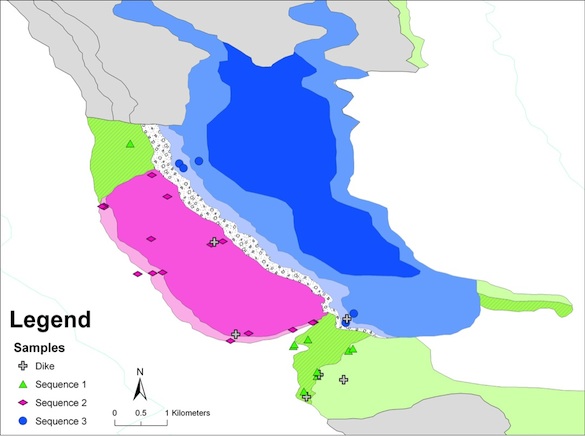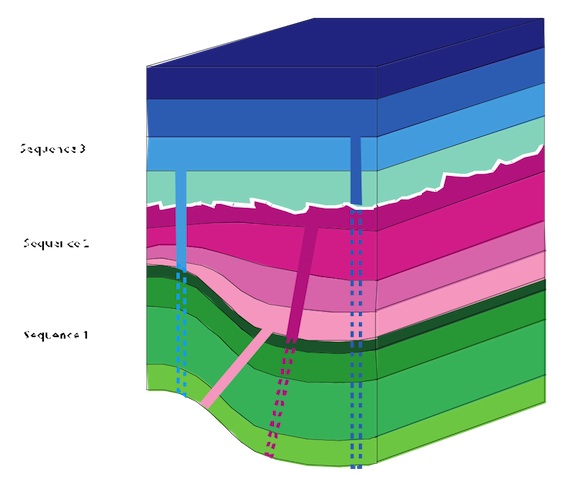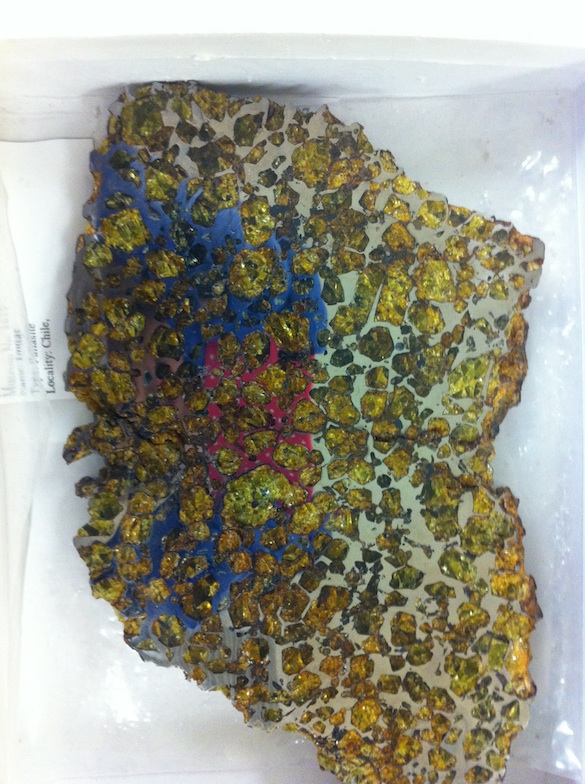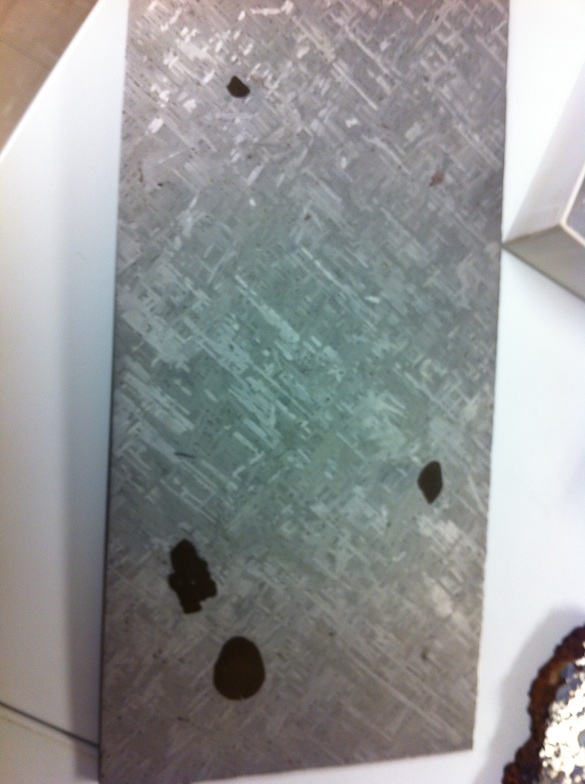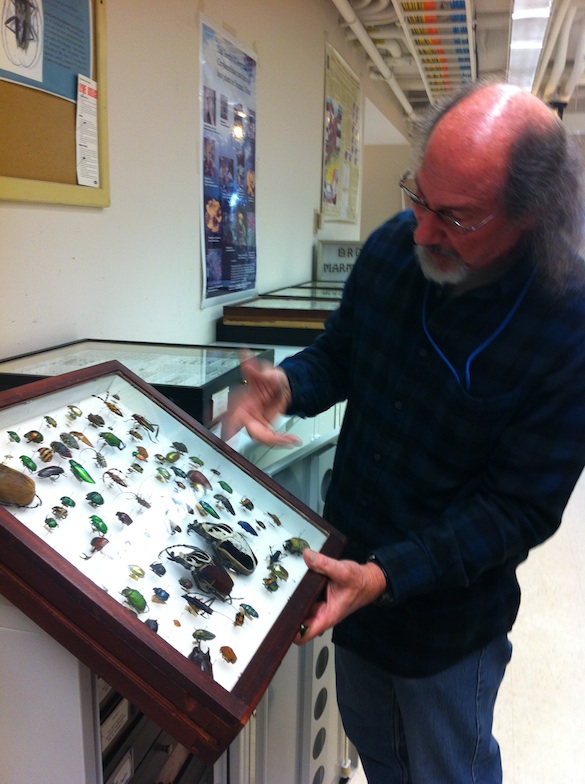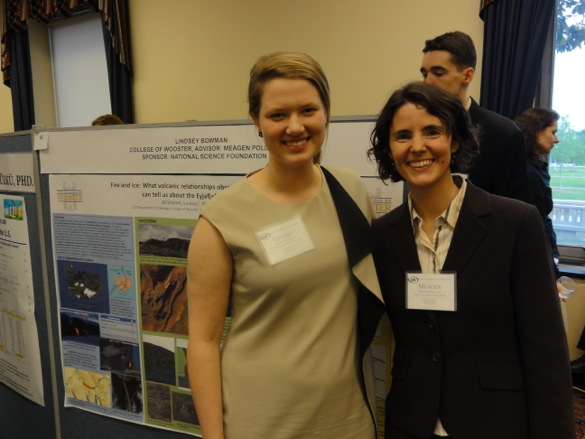 We’re looking at two fossils above. One is the bryozoan Peronopora, the major skeletal structure. The second is the odd series of scalloped holes in its surface. These are a trace fossil called Catellocaula vallata Palmer and Wilson 1988. They at first appear to be borings cut into the bryozoan colony. Instead they are holes formed by the intergrowth of a soft-bodied parasite with the living bryozoan colony. This type of trace fossil is called a bioclaustration. We gave it the Latin name for “little chain of walled pits”.
We’re looking at two fossils above. One is the bryozoan Peronopora, the major skeletal structure. The second is the odd series of scalloped holes in its surface. These are a trace fossil called Catellocaula vallata Palmer and Wilson 1988. They at first appear to be borings cut into the bryozoan colony. Instead they are holes formed by the intergrowth of a soft-bodied parasite with the living bryozoan colony. This type of trace fossil is called a bioclaustration. We gave it the Latin name for “little chain of walled pits”.
My good friend Tim Palmer and I found this specimen and many others in 1987 as we explored the Upper Ordovician Kope Formation in the Cincinnati region. We were collecting bioeroded substrates like hardgrounds and shells, and these features were clearly different from the usual borings. They do not actually cut the bryozoan skeleton, for one thing. For another it is apparent that the bryozoan growth was deflected around whatever sat in those spaces. Tim and I called this kind of interaction “bioclaustration”, meaning “biologically walled -up”.
 Catellocaula vallata on the Upper Ordovician bryozoan Amplexopora. Note that the scalloped holes have more lobes than those seen in the lead image. This may mean it was a different species of infesting soft-bodied organism.
Catellocaula vallata on the Upper Ordovician bryozoan Amplexopora. Note that the scalloped holes have more lobes than those seen in the lead image. This may mean it was a different species of infesting soft-bodied organism.
The infesting parasite on the bryozoan colony was itself colonial, consisting of small clusters connected by extended stolons. The bryozoan grew around the parasite, roofing over the stolons and making walls on the margins of the clusters. We think the parasite was a soft-bodied ascidian tunicate like the modern Botryllus. If true, it is the earliest fossil tunicate known.
 This closer view of C. vallata shows the scalloped margins of the pits and the horizontal connections between them.
This closer view of C. vallata shows the scalloped margins of the pits and the horizontal connections between them.
 Another specimen of C. vallata. This view shows the flat floors of the bioclaustration features.
Another specimen of C. vallata. This view shows the flat floors of the bioclaustration features.
 Acetate peels cut longitudinally through the bryozoan and bioclaustrations. On the left you can see that the bryozoan zooecia (long tubes) were deflected sideways as they grew. On the right is a tunnel connecting two pits, with bryozoan zooids forming the roof. (From Palmer and Wilson, 1988.)
Acetate peels cut longitudinally through the bryozoan and bioclaustrations. On the left you can see that the bryozoan zooecia (long tubes) were deflected sideways as they grew. On the right is a tunnel connecting two pits, with bryozoan zooids forming the roof. (From Palmer and Wilson, 1988.)
References:
Bromley, R.G., Beuck, L. and Taddei Ruggiero, E. 2008. Endolithic sponge versus terebratulid brachiopod, Pleistocene, Italy: accidental symbiosis, bioclaustration and deformity. Current Developments in Bioerosion, Erlangen Earth Conference Series, 2008, III, 361-368.
Palmer, T.J. and Wilson, M.A. 1988. Parasitism of Ordovician bryozoans and the origin of pseudoborings. Palaeontology 31: 939-949.
Tapanila, L. 2006. Macroborings and bioclaustrations in a Late Devonian reef above the Alamo Impact Breccia, Nevada, USA. Ichnos 13: 129-134.
Taylor, P.D. and Voigt, E. 2006. Symbiont bioclaustrations in Cretaceous cyclostome bryozoans. Courier Forschungsinstitut Senckenberg 257: 131-136.
 Sure it is intellectually stimulating, adventurous and fun, but geology is also an important field for the present and future according to the latest issue of Forbes magazine. Geology is ranked as number 7 in the most valuable college majors, with a starting median pay of $45,300 and a “mid-career” rise in pay of 84%. The projected job growth in geology is 19.3%.
Sure it is intellectually stimulating, adventurous and fun, but geology is also an important field for the present and future according to the latest issue of Forbes magazine. Geology is ranked as number 7 in the most valuable college majors, with a starting median pay of $45,300 and a “mid-career” rise in pay of 84%. The projected job growth in geology is 19.3%. Top image: Rob McConnell and Palmer Shonk in Estonia. Bottom image: Sophie Lehmann in England.
Top image: Rob McConnell and Palmer Shonk in Estonia. Bottom image: Sophie Lehmann in England.









